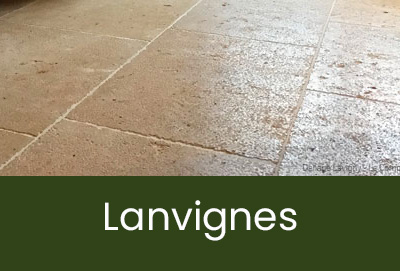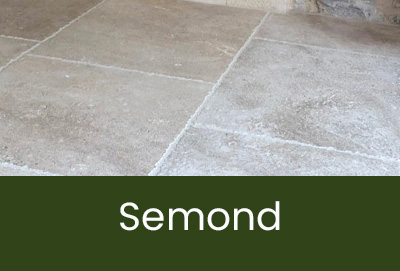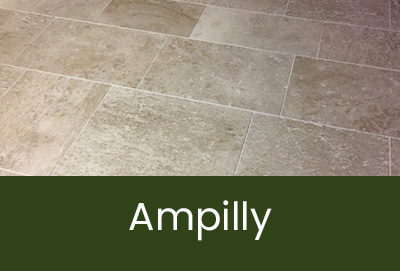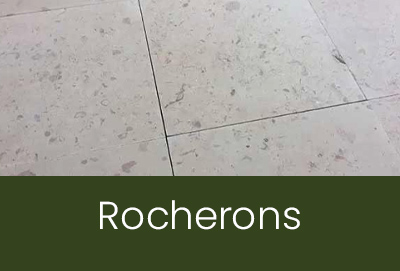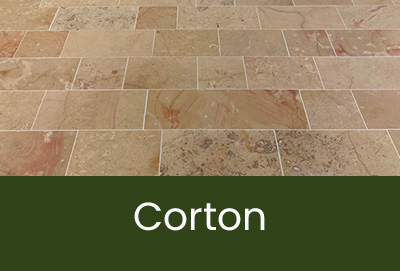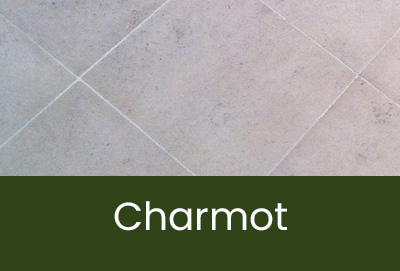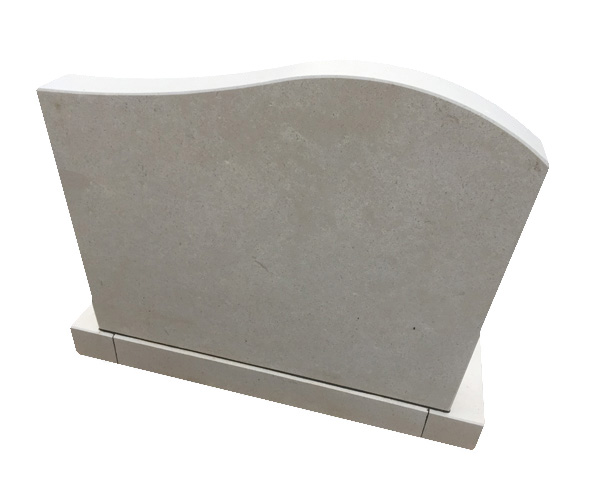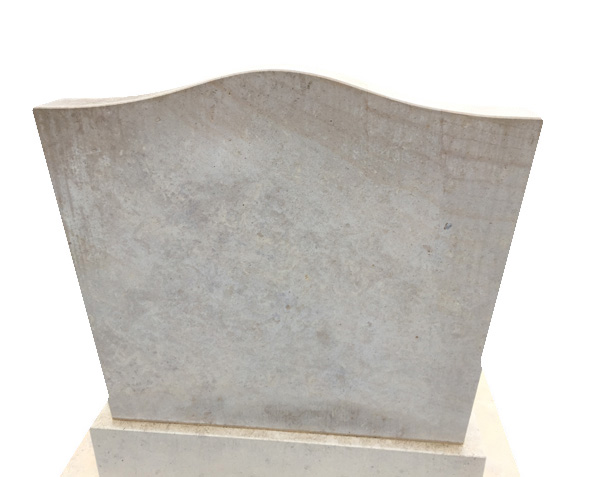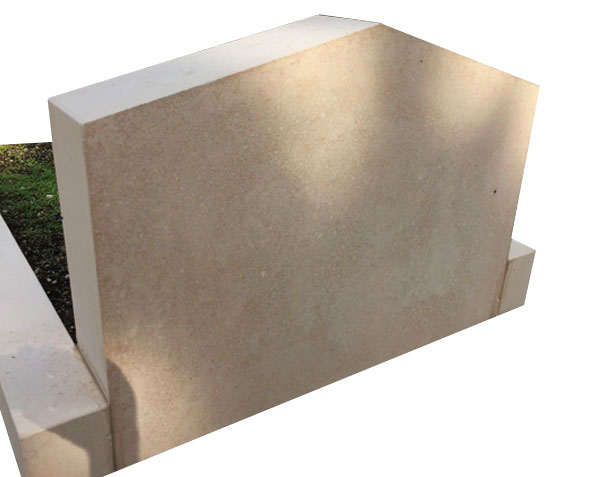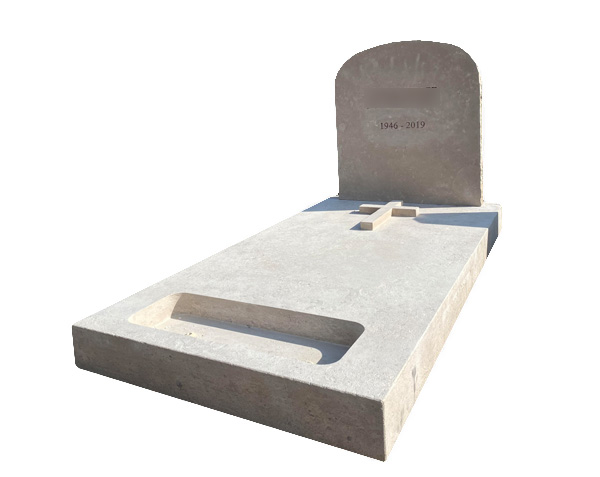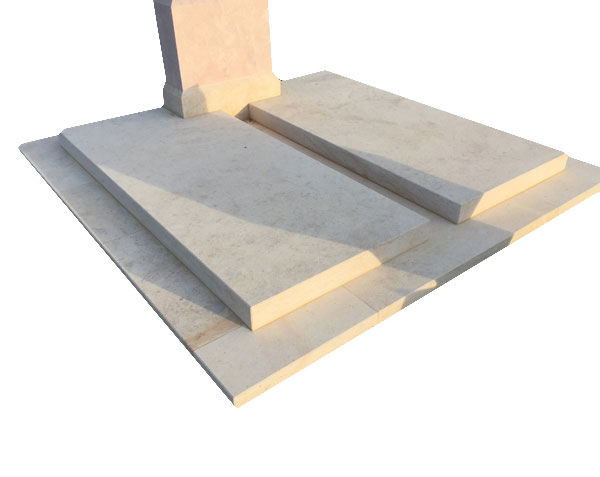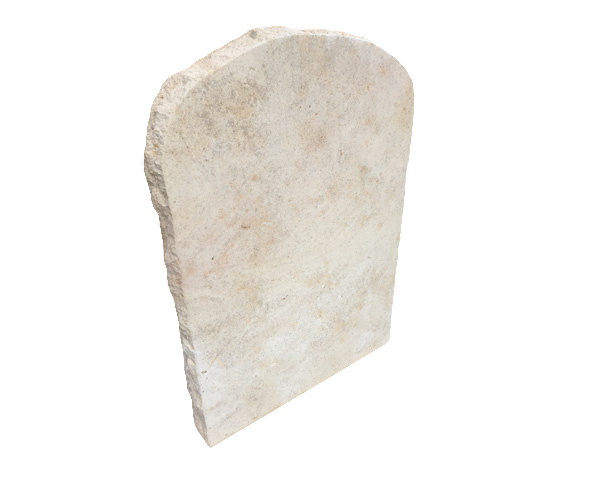How to seal a stele ?
Generally, a professional will take care of the installation of the funeral monument for you. This professional will master the technical aspects that are detailed below. On the other hand, understanding these aspects allows a better knowledge of what a funerary monument is, the elements that are part of it and their assembly.
Where is the headstone sealed ?
In the funerary jargon, the funerary stele (or headstone) is the vertical part of the funerary monument. It is not mandatory but is used in France to engrave names, dates of birth and death as well as a possible epitaph or drawing.
Thus the stele is part of a whole : tombstone, plinths, basement ... In this context the headstone is fixed on the tombstone (the horizontal part of the monument) or on a base, slab or basement also allowing to stand the headstone.
The headstone can also be fixed on a concrete base if there is no tombstone. This is the case of simple landscaped funerary monuments with only a stele / headstone.
What methodology and rules to respect ?
The stability of the stele is ensured by the studding of the elements between them. The stud is a resistant rod preventing the tipping of vertical elements. The studs are round or square made of stainless material. A simple gluing of the stele is not enough.
The sealing holes will house the studs. The diameter of the hole is larger than the diameter of the stud so that the glue can surround the stud. This stud is positioned in the drilling of the element that will receive the stele, then the stele is positioned vertically on this stud. Note: the element welcoming the headtsone must have a minimum thickness of 8 cm to allow efficient studding.
Some elements of the monument will have to be potentially dismantled to allow future burials: thus the glue, the cement grout or a cement mortar are suitable because they ensure the fixation but will not damage the stone in case of dismantling. A silicone sealant will then be used to seal.
At Comptoir des Pierres, we provide, in addition to making the sealing holes, fiberglass studs. They are already cut to the appropriate size. This is what we do when we produce all the elements of the monument that are going to be assembled together. If we produce the stele alone, we can carry out the drilling and provide the stud on request. We exclusively use fiberglass studs that are perfectly inert (do not rust or deform). With simple metal studs, the risk is that by dint of rain and bad weather, the stud rusts and swells and then bursts the stone.
The diameter of the sealing holes and studs is adapted according to the size of the headstone (width, height, thickness) and therefore the weight. To stud, the stele must be at least 8 cm thick but we recommend 10 cm instead.
As part of a simple stele with landscaping without basement, it will be necessary to come and dig the place where the headstone will be positioned and then provide a concrete foundation of at least 13 cm. The stud will be carried out directly in this foundation. For an aesthetic rendering, we recommend that part of the limestone headstone be below ground level (a few centimeters) before covering with earth.
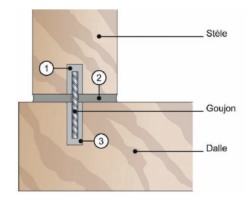
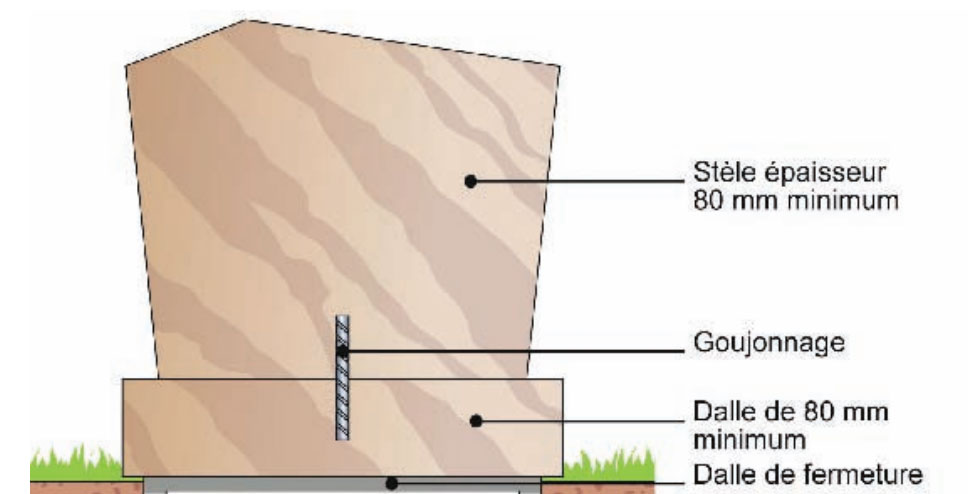
Source : CTMNC (Technical Centre for Natural Building Materials)

